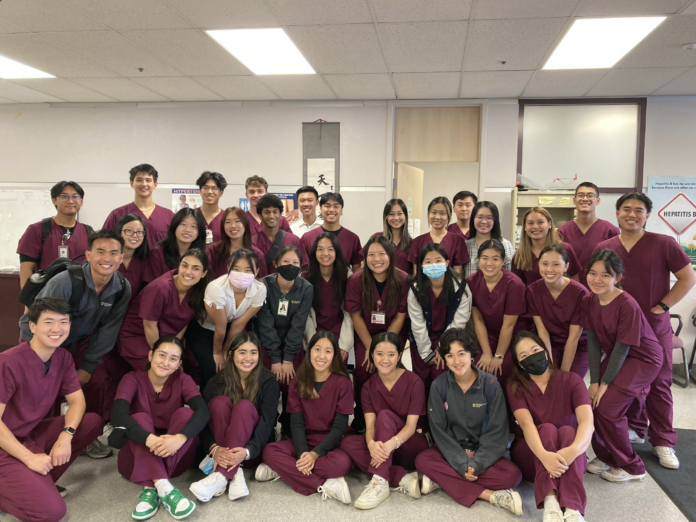Paul Hom Asian Clinic provides free health care to Asian population in Sacramento
By LYNN CHEN — features@theaggie.org
Student-led organizations from UC Davis can make great impacts on local communities. The Paul Hom Asian Clinic, a free student-run clinic located in Sacramento, is dedicated to providing free primary care services to the underserved and uninsured Asian population in Sacramento.
Eight different health-related committees comprise the undergraduate branch of the clinic, each focused on looking after a specific aspect of patient health. For example, there are committees revolving around neurology, women’s health and Covered California services.
In order to accomplish its mission in a linguistically and culturally sensitive manner, the organization also offers translation services concurrent to its clinical setting. You can find student volunteers who speak languages such as Mandarin, Cantonese, Korean and even Spanish.
The clinic itself is staffed by undergraduates, medical students and doctors from UC Davis and its medical school, all of whom are passionate about advocating for adequate health care for Asian immigrants.
“It was never pushed upon us that we needed to work harder,” Aastha Lele, recent UC Davis graduate and previous English patient advocate for the Paul Hom Asian Clinic, said. “Everyone [knew] that they wanted to do well, and it was a culture I really enjoyed being a part of.”
David Wei, a first-year economics major, agreed with this sentiment as well. Wei has already visited the clinic once and is a current applicant for the Mandarin patient advocate position.
“It’s super cool to see how detail-oriented everyone was about the most effective way to treat patients,” Wei said.
Students at the clinic were mainly motivated by the pressing medical needs they understood their patients had.
“[Our patients] wouldn’t be able to access health care anywhere else outside of our clinic,” Bradnon Gatanaga, an undergraduate co-director for the clinic, said. He is also currently a fourth-year neurobiology, physiology and behavior major looking to enter the medical field.
“They have a language barrier and can’t go to any doctor or a regular healthcare service,” Gatanaga said. “But being able to provide such a unique, important and necessary service […] to people who [otherwise] wouldn’t be able to get — that is such a gratifying experience.”
The level of cultural competence the clinic maintains for its patients is part of what makes it such an impactful organization, to both the patients and those who work at the facility.
“What makes the [volunteer experience] so redeeming is that a lot of patients really valued what we did as undergrads,” Lele said. “When I spoke Hindi to a few of the patients I translated for, it made them feel like they were at home and being taken care of. They would invite me over for dinner and say stuff like, ‘I’ll cook like your grandma does!’”
Though Lele had to decline their offers, she was touched by how much the patients appreciated what the volunteers did. In fact, this experience from being part of the Paul Hom Asian Clinic is one of the reasons Lele is a pre-med student now.
The organization also provides effective medical treatment in concurrence with its translation services.
“One of our patients came in and brought us a whole box of doughnuts, just because they were so grateful for us being able to help them with a [health issue] that they’ve been having,” Gatanaga said.“They actually did have a primary care provider of their own who wasn’t [that effective]. But then they came to our clinic and said that our care was really phenomenal, and that [we] were really able to help them.”
Many of their patients actually have their own health insurance and can access primary care providers, according to Gatanaga. However, they choose to come to the Paul Hom Asian Clinic for its excellent and thorough services.
Beyond offering quality primary care services to the Sacramento Asian community, the organization is also committed to providing opportunities for its undergraduate members to gain experience in medicine.
Lele believed that the process of translating for patients and seeing how they get cared for by doctors developed members’ knowledge of medical treatments.
Additionally, when Lele was still in the clinic, medical students would often host “drug of the week” presentations to undergraduates. These were based on material the medical students themselves were currently learning.
“They made the meetings so that undergrads would be open to asking questions about the [drug] mechanisms that were being presented,” Lele said.
Despite all that it has already accomplished, the Paul Hom Asian Clinic is also working to continuously improve its work and the care it supplies.
For example, Gatanaga recently implemented a psychiatry screening program to ensure that at least once a year all patients can have an avenue to discuss their mental health.
“Since then, we’ve actually had a really big influx of patients coming into our psychiatry specialty days,” Gatanaga said. “I feel like I’ve been able to do a lot of projects that I’m [passionate] about. As a leader in the clinic, you really have the power to make changes.”
Written by: Lynn Chen — features@theaggie.org





